
The Imperial Crypt: A Journey Through Royal History
Explore the Imperial Crypt in Vienna, where the opulent history of the Habsburg dynasty comes to life among stunning sarcophagi and rich architectural beauty.
The Imperial Crypt in Vienna is a must-visit for history enthusiasts, offering a glimpse into the opulent lives and final resting places of the Habsburg dynasty. This breathtaking site features stunning architecture and rich historical significance, making it an essential stop for tourists exploring Vienna's cultural landscape.
A brief summary to Imperial Crypt
- Tegetthoffstraße 2, Vienna, Innere Stadt, 1010, AT
- +431512685388
- Visit website
Local tips
- Visit during weekdays to avoid larger crowds and enjoy a more intimate experience.
- Take a guided tour to gain deeper insights into the history and significance of each tomb.
- Photography is allowed, but be respectful of the solemn atmosphere inside.
- Check the opening hours before your visit, as they may vary seasonally.
Getting There
-
Car
If you're traveling by car, you can reach the Imperial Crypt located at Tegetthoffstraße 2, 1010 Wien, by following the A1 or A2 highways. From Lower Austria, take the A1 towards Vienna. Once in Vienna, follow signs for the city center (Innere Stadt). Use the Wiental Straße to enter the city, and then navigate to the Ringstraße. The Imperial Crypt is located near the Hofburg Palace, so look for signs pointing towards this area. Parking is available in nearby garages, but expect to pay around €3–€5 per hour.
-
Public Transportation
To reach the Imperial Crypt using public transportation, start by taking a train from any station in Lower Austria to Wien Hauptbahnhof (Vienna Main Station). Once you arrive at Wien Hauptbahnhof, transfer to the U1 subway line (red line) heading towards Stephansplatz. At Stephansplatz, transfer to the U3 subway line (yellow line) towards Volkstheater. Get off at the station 'Karlsplatz.' From Karlsplatz, it's a 10-minute walk to the Imperial Crypt. Follow the signs towards the Hofburg Palace, and you will find it on Tegetthoffstraße. The total cost for the train and subway ticket will be approximately €5–€7.
Discover more about Imperial Crypt
Iconic landmarks you can’t miss
Palais Grundemann Esterházy (Grundemann von Falckhenberg)
0.2 km
Discover the elegance of Palais Grundemann Esterházy, a historic landmark in Vienna that showcases stunning Baroque architecture and rich cultural heritage.
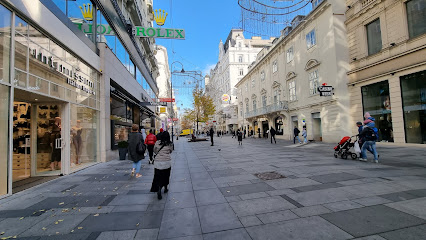
Albertinapl. 1
0.2 km
Discover the vibrant heart of Vienna at Albertinapl. 1, where art, culture, and culinary delights await every traveler.

Dorotheergasse 7
0.2 km
Explore the enchanting Dorotheergasse 7 in Vienna, a stunning architectural landmark that captures the city's rich cultural heritage.

Michaelertrakt
0.3 km
Visit Michaelertrakt in Vienna, an architectural marvel showcasing Baroque elegance and rich history in the heart of Austria's capital.

House of Music
0.3 km
Experience the captivating world of music at Vienna's House of Music, where sound meets innovation in an interactive museum setting.

Haas-Haus
0.3 km
Experience the stunning blend of modern architecture and historic charm at Haas-Haus in the heart of Vienna, a must-see for all travelers.

Habsburgergasse 3
0.3 km
Explore Habsburgergasse 3, an architectural marvel in Vienna's historic district, where the beauty of the past meets the vibrancy of the present.

Time Travel Vienna
0.3 km
Discover Vienna's history like never before at Time Travel Vienna, an immersive local history museum where the past comes to life.

Deutschordenskirche
0.3 km
Explore the serene beauty of Deutschordenskirche, a hidden gem in Vienna's heart, blending exquisite architecture with rich spiritual heritage.

Graben
0.3 km
Discover Graben, Vienna's iconic pedestrian street, where luxury shopping meets rich history amidst stunning Baroque architecture.

Franziskanerpl.
0.3 km
Experience the charm and culture of Vienna at Franziskanerplatz, a vibrant square in the heart of the city filled with history and local delights.

Column of Pest
0.3 km
Explore the Column of Pest, a stunning Baroque monument in Vienna commemorating the city's triumph over the Great Plague, surrounded by vibrant culture.

Schweizerhof Hofburg Wien
0.3 km
Discover the elegance and rich history of the Schweizerhof Hofburg in Vienna, a stunning landmark showcasing the opulence of the Habsburg dynasty.
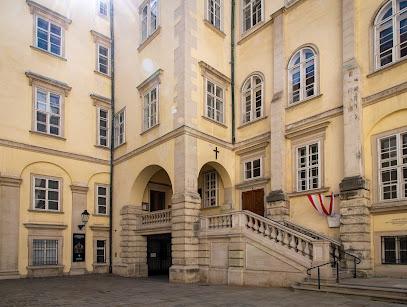
Swiss court, Hofburg Vienna
0.3 km
Discover the breathtaking Swiss Court at Hofburg Vienna, where history, architecture, and royal charm intertwine in a stunning landmark.

Hercules and the Nemean lion fountain
0.3 km
Discover the stunning Hercules and the Nemean Lion Fountain in Vienna's Burggarten, a must-see tourist attraction steeped in history and myth.

Unmissable attractions to see
Capuchin Church, llc
0.0 km
Explore the Capuchin Church in Vienna, a breathtaking Baroque masterpiece and the final resting place of the Habsburgs, steeped in history and artistry.

Kapuzinerkloster
0.0 km
Explore the serene beauty and rich history of Kapuzinerkloster, a must-see monastery in the heart of Vienna, Austria.

Concerts Capuchin Church
0.0 km
Experience the enchanting concerts of Capuchin Church, a historic venue in the heart of Vienna, where music and spirituality beautifully intertwine.

Neuer Markt
0.1 km
Experience the vibrant culture and stunning architecture of Neuer Markt, Vienna's historical square in the heart of the city.

Donnerbrunnen
0.1 km
Experience the beauty and history of the Donnerbrunnen, a stunning baroque fountain in Vienna's vibrant Neuer Markt.

Gallery at the Albertina - Zetter GmbH
0.1 km
Explore the Albertina Gallery in Vienna, home to a stunning art collection and exquisite exhibitions, perfect for art lovers and cultural enthusiasts.

Theatermuseum
0.1 km
Explore the rich history of theater at Vienna's Theatermuseum, where culture and performance come alive in a captivating setting.

Palais Lobkowitz
0.1 km
Explore Palais Lobkowitz, Vienna's historical gem, showcasing Baroque architecture, rich heritage, and cultural significance in the heart of the city.
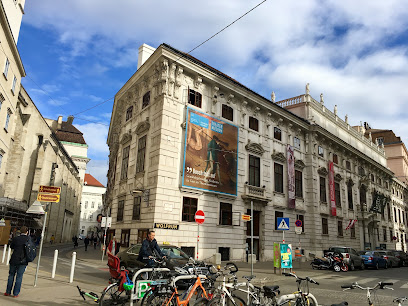
Maltese Church, Vienna
0.1 km
Discover the serene beauty of the Maltese Church in Vienna, a stunning Baroque architectural gem and spiritual haven for visitors.

Helmut-Zilk-Platz
0.1 km
Experience the charm of Helmut-Zilk-Platz, a historical landmark in Vienna that blends stunning architecture with vibrant public life.

K.u.K. Café-Konditorei L. Heiner.
0.1 km
Discover the timeless elegance and rich flavors of Vienna at K.u.K. Café-Konditorei L. Heiner, where tradition meets taste.

Prime Tours
0.1 km
Discover Vienna's rich history and culture with Prime Tours, your expert guide to the city's must-see attractions and hidden gems.

MYTHOS MOZART
0.1 km
Explore contemporary creativity at Mythos Mozart, a modern art museum in Vienna that showcases innovative artworks and dynamic exhibitions.
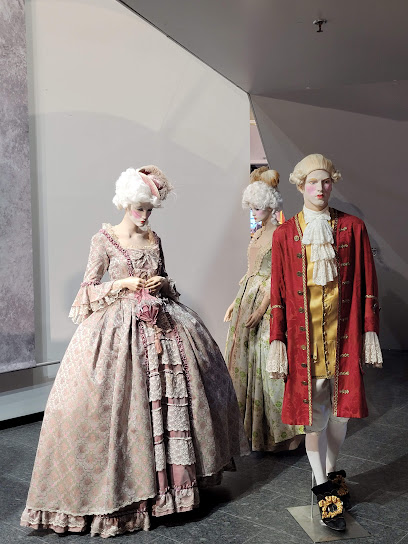
Monument Against War and Fascism
0.1 km
Explore Vienna's Monument Against War and Fascism, a powerful reminder of peace amidst the city's rich cultural heritage.

Café Mozart
0.2 km
Experience the charm of Vienna at Café Mozart, where exquisite pastries and rich coffee culture meet in a historic setting.

Essential places to dine
Restaurant Führich
0.1 km
Experience the best of Austrian cuisine with a touch of elegance at Restaurant Führich, where every meal is a celebration of flavor.

DO & CO Albertina
0.2 km
Experience fine dining at DO & CO Albertina - where exquisite cuisine meets stunning views in the heart of Vienna.

Restaurant Rote Bar
0.2 km
Experience the epitome of Austrian fine dining at Restaurant Rote Bar, where tradition meets sophistication in every exquisite dish.

Restaurant Grüne Bar
0.2 km
Experience fine dining at Restaurant Grüne Bar in Vienna – where exquisite Austrian cuisine meets elegant ambiance.

Zum weißen Rauchfangkehrer
0.2 km
Indulge in authentic Austrian cuisine at Zum weißen Rauchfangkehrer, where tradition meets exquisite flavor in the heart of Vienna.

Brasserie Palmenhaus Wien
0.3 km
Experience fine dining amidst lush greenery at Brasserie Palmenhaus Wien - where elegance meets nature in the heart of Vienna.

Restaurant Der Kuckuck
0.3 km
Experience authentic Austrian cuisine at Restaurant Der Kuckuck in Vienna – where tradition meets taste in a halal-friendly setting.

Ristorante Settimo Cielo (im Hotel Royal)
0.3 km
Experience culinary excellence at Ristorante Settimo Cielo in Vienna – where authentic Italian flavors meet breathtaking city views.
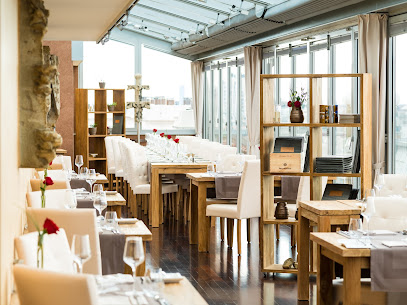
DO & CO Restaurant Stephansplatz
0.3 km
Discover culinary excellence and stunning views at DO & CO Restaurant Stephansplatz in Vienna's vibrant city center.
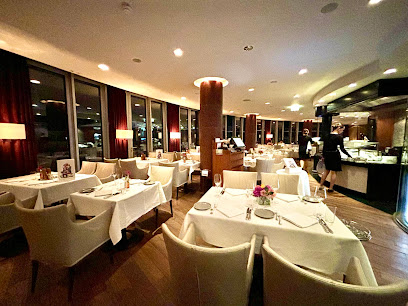
TIAN
0.3 km
Discover TIAN: Vienna's premier vegetarian restaurant offering innovative dishes made from locally sourced ingredients in an elegant setting.
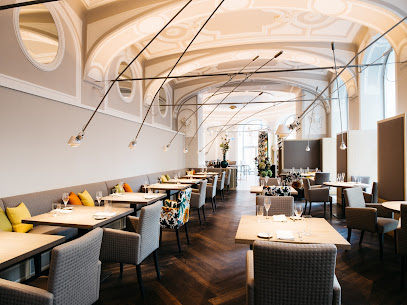
Ribs of Vienna
0.4 km
Experience the taste of Austria at Ribs of Vienna - where tradition meets flavor in a cozy setting.

Patara Restaurant Vienna GmbH
0.4 km
Discover the essence of Thai cuisine at Patara Restaurant in Vienna - where traditional flavors meet modern elegance.

Restaurant Wienerin - 1010 Wien
0.4 km
Discover the flavors of Austria at Restaurant Wienerin - where tradition meets modernity in the heart of Vienna.

WEIN & CO Wien Stephansplatz – Weinrestaurant & Flagshipstore
0.4 km
Discover fine wines and exquisite cuisine at WEIN & CO Wien Stephansplatz – Vienna's premier destination for wine enthusiasts.

Restaurant Chamäleon
0.4 km
Discover authentic Swiss flavors at Restaurant Chamäleon in Vienna's Innere Stadt - a culinary haven for food lovers.

Markets, malls and hidden boutiques
La Cure Gourmande Vienna
0.0 km
Experience the sweetness of Vienna at La Cure Gourmande, where gourmet chocolates and delightful souvenirs await every tourist.

Swarovski
0.1 km
Discover the enchanting world of Swarovski in Vienna, where exquisite crystals and elegant designs intertwine, creating a truly unique shopping experience.

Wolford Boutique Wien
0.1 km
Explore Wolford Boutique Wien for an unparalleled shopping experience in luxury lingerie and women's fashion, set in the heart of Vienna's vibrant shopping district.

Oh Vienna Souvenir Shop
0.1 km
Discover unique keepsakes and authentic Viennese gifts at Oh Vienna Souvenir Shop, where every item celebrates the charm of the city.

Souvenirs Vienna
0.1 km
Discover the charm of Vienna through unique souvenirs that capture the city's spirit and artistry, perfect for reminiscing about your unforgettable journey.

Planet Vienna
0.1 km
Explore Planet Vienna, the ultimate souvenir store for authentic Viennese crafts and gifts that capture the spirit of Austria.

Steffl
0.1 km
Discover the elegance of Vienna at Steffl, where luxury meets local charm in a premier shopping experience.

Austria Corner Amadeus
0.1 km
Explore Austria Corner Amadeus, a charming gift shop in Vienna, offering authentic souvenirs and unique treasures that celebrate Austrian culture.
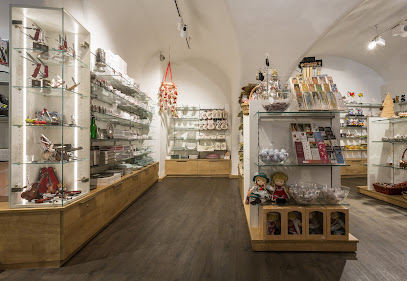
THE WORLD TO GO VIENNA
0.2 km
Explore The World To Go Vienna for unique souvenirs and gifts that reflect the rich culture and artistry of the city, perfect for every traveler.

LEANSCHI & friends e.U. | Concept Store(s) & Retail Services
0.2 km
Explore the creative heart of Vienna at LEANSCHI & friends e.U., a concept store offering unique gifts and artisan treasures.
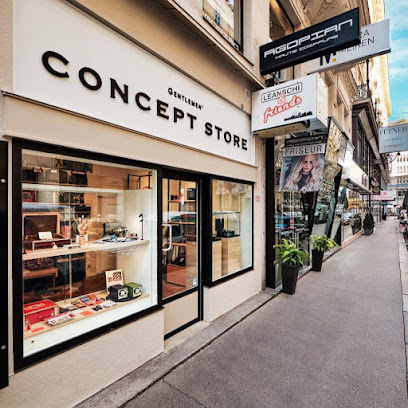
& Other Stories
0.2 km
Explore & Other Stories in Vienna, where chic women's fashion meets exceptional service. Discover unique styles and accessories in a stylish boutique.

STEIFF in WIEN
0.3 km
Experience the enchanting world of STEIFF in Vienna, where premium plush toys and nostalgia come together for a unique shopping adventure.
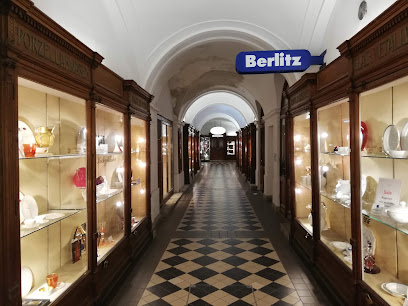
DIE VERMISCHTE WARENHANDLUNG
0.3 km
Explore Vienna's hidden gem for unique gifts and local crafts at Die Vermischte Warenhandlung, a charming shop in the heart of the city.

A&K Geschenke und Souvenir KG
0.4 km
Explore A&K Geschenke und Souvenir KG in Vienna for authentic souvenirs and unique keepsakes that embody the city’s rich artistic heritage.

HAMTIL & SÖHNE Concept Store Vienna
0.4 km
Discover unique gifts and local craftsmanship at HAMTIL & SÖHNE Concept Store in Vienna's vibrant Innere Stadt.
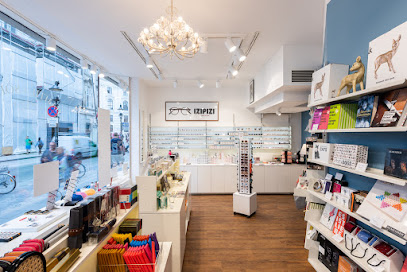
Essential bars & hidden hideouts
Nightflys American Bar
0.2 km
Discover the lively Nightflys American Bar in Vienna, where American flair meets a vibrant nightlife experience, perfect for unwinding after a day of exploring.

Loos American Bar
0.2 km
Experience the charm of Vienna at Loos American Bar, where exquisite cocktails and elegant Art Deco ambiance create unforgettable memories.

Blaue Bar
0.2 km
Immerse yourself in Vienna's nightlife at Blaue Bar, where elegance meets exceptional cocktail craftsmanship.

New York Bar and Music
0.2 km
Discover the lively atmosphere and live music at New York Bar and Music, a perfect destination for cocktail lovers and music enthusiasts in Vienna.

Kruger’s American Bar
0.2 km
Discover the vibrant ambiance and expertly crafted cocktails at Kruger’s American Bar, a must-visit destination for nightlife in Vienna.

Stadtbar
0.2 km
Experience Vienna's vibrant atmosphere at Stadtbar, a cozy bar offering a delightful selection of drinks and local snacks in the heart of the city.

Eden Bar
0.3 km
Discover the heart of Vienna's nightlife at Eden Bar, where live music meets a vibrant atmosphere for an unforgettable evening.

Bar 13 Cocktails
0.3 km
Experience the vibrant nightlife of Vienna at Bar 13, where expertly crafted cocktails and a lively atmosphere await you.

Kleinod
0.3 km
Discover the vibrant cocktail culture in Vienna at Kleinod, where expertly crafted drinks and stylish ambiance create an unforgettable nightlife experience.

Bristol Bar
0.3 km
Experience the luxurious charm of Bristol Bar in Vienna, where exquisite cocktails meet authentic Austrian cuisine in an elegant setting.

1516 Brewing Company
0.3 km
Discover Vienna's vibrant beer culture at 1516 Brewing Company, where craft beer meets delicious cuisine in a lively brewpub atmosphere.

Flanagans
0.4 km
Experience authentic Irish hospitality and delicious gastropub fare at Flanagans in Vienna, where culture and cuisine meet in a vibrant atmosphere.

Bockshorn Irish Pub
0.5 km
Discover the warmth of Irish hospitality at Bockshorn Irish Pub in Vienna, where great brews and lively ambiance await.

Roberto American Bar
0.5 km
Experience the vibrant nightlife of Vienna at Roberto American Bar, renowned for its exquisite cocktails and lively atmosphere.

First American Bar
0.5 km
Discover the lively heart of Vienna at First American Bar, where exceptional cocktails and vibrant atmosphere create unforgettable nights.




